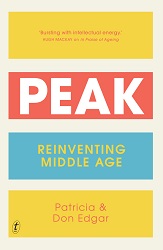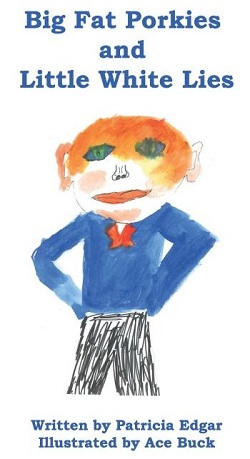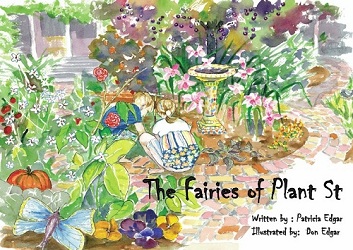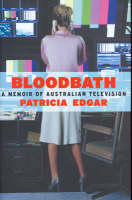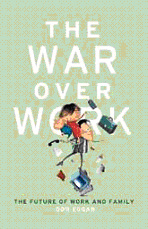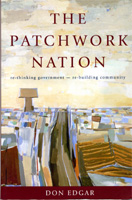PATRICIA EDGAR. The Death of Australian Children's Broadcast Television Programming .
How many times must it be said that if we do not take action Australian children's programming will disappear from our screens?
The Director-General of the BBC has now conceded there is a crisis, with young people spending more time viewing Netflix and YouTube than they do BBC programs. In July 2017 he announced the broadcaster's biggest investment in children's services in a generation - an additional GBP 34 million across the next three years to enable the BBC to reinvent how it serves its youngest audience in the years ahead. The BBC's plan is foundering and as well Australia's children's viewing through broadcast television, is tanking quietly.
Once, the envy of children's television producers around the world, for its vast coffers, the BBC has been unable to stem the tide of children turning off their productions. At the same time, Netflix has announced that it will spend US $1 billion in 2018 on children's productions, as part of its US $8 billion expenditure on original content. (Their widely praised adaptation of A Series of Unfortunate Events is but one example of their serious intent). The BBC budget, once viewed as a huge production resource, has been dwarfed by this media behemoth.
While the seismic shift to on-demand viewing crosses all demographic groups, the BBC affirmed, 'it was the very youngest age groups that the corporation was at most risk of losing touch with' (The Guardian, March 28, 2018). More than 80% of children go to YouTube for on-demand content. Half go to Netflix and only 29% go to the BBC iPlayer. Children spend more time online (15 hours and 18 minutes on average) than they do watching TV (14 hours). The average weekly reach of CBBC, the BBC Children's Channel, once a dominant player in children's TV among 6-12-year-olds, has fallen dramatically, from close to 40% in 2011 to less than 25% last year.
Prime Minister Kevin Rudd was ill-advised by the ABC, with the once independent ACTF (Australian Children's Television Foundation) in tow, and made a disastrous and short-sighted decision, following his Vision 2020 Summit in 2009, to fund an ABC Children's Channel. The evidence overseas, from Ofcom and the BBC, ACMA's research in Australia and from the US Kaiser Family Foundation was already showing by 2007 that children were moving their attention away from scheduled programming to mobile devices and on-demand services. So unsurprisingly the vision has collapsed well before its due date.
The ABC decided they would have not one, but two channels, for children aged 1-14. So now the public broadcaster is lumbered with two digital channels requiring more than 10,000 hours of scheduled programming to finance as their young audience bleeds out.
Quick action is required, but not that called for by a self-interested production industry, to slap Australian drama quotas across all media outlets. The arguments for quality children's programming, when quotas were implemented, were never about the benefit to the industry - that was a side benefit - the arguments were and remain all about service to the child audience. Given the crisis for Australian content, visionary strategic thinking is required.
The ABC needs to consolidate its two-channel service to children to focus on the preschoolers and up to 7-year-olds where the need for local programming is imperative for them to grow up understanding their own culture. For children 8-14 there is a need for a new online service that is project-driven, that allows for their active engagement, their own productions, a youth news service that takes on the challenges and distortions of fake news, and a location that teaches them to leave behind a positive global footprint.
We have known for a decade many kids prefer to engage with interactive technology, gaming, chat rooms, instant messaging, and the joys of online content they create themselves rather than simply watching scheduled television. Professionally produced quality, drama and comedy are important to children and they also help drive traffic. They should be in the mix, but they shouldn't define the service. A few landmark titles would suffice. They don't need to follow broadcast formats - short five minute dramas can be just as effective for this audience as 30 or 60 minutes.
A new service should be accessible across multiple platforms accommodating distribution to a desktop, online or to mobile devices. It should be a robust, flexible, platform that lets kids do what they want in the ways they want, when they want. This service could be used throughout the school systems as well as domestically.
The public broadcaster should be taking a lead here but the commercial networks should each pay an annual levy of $10 million in return for relief from quotas. By such an exchange, their responsibilities to the child audience, as holders of licences in public trust, would be fulfilled.
The Australian and Children's Screen Content Review is yet to report, so there is an opportunity now to correct our inertia regarding children's programming. We were once an international leader in the field. Is there anyone left in charge with the vision and capacity to think outside the square? I can't see evidence of them.
Patricia Edgar was the founding Director of the Australian Children's Television Foundation, the producer of Round the Twist and multiple award-winning programs.



